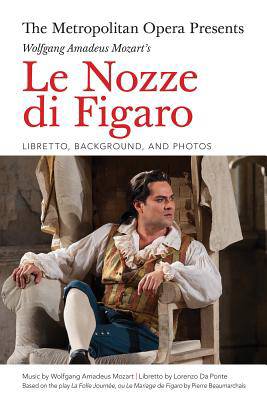
- Retrait gratuit dans votre magasin Club
- 7.000.000 titres dans notre catalogue
- Payer en toute sécurité
- Toujours un magasin près de chez vous
- Retrait gratuit dans votre magasin Club
- 7.000.0000 titres dans notre catalogue
- Payer en toute sécurité
- Toujours un magasin près de chez vous
The Metropolitan Opera Presents: Wolfgang Amadeus Mozart's Le Nozze Di Figaro
Libretto, Background and Photos
23,95 €
+ 47 points
Description
Today Mozart's exquisite Le Nozze di Figaro delights and moves audiences everywhere, long after its 1786 birth into tumultuous times. The original Beaumarchais play raised a firestorm in France, then on the brink of revolution, with its dangerous commentary on class relations. However, Lorenzo Da Ponte carefully omitted anything political from his opera libretto; what remained, when joined with Mozart's sublime and penetrating music, was a witty yet profound tale of infatuation, heartache, scheming, and tenderness, where complex emotions are laid bare and everyone, regardless of class, is equally vulnerable to the powers of love. Figaro continues the story of The Barber of Seville several years later, in a single "day of madness." Count Almaviva's love, Rosina, is now his long-suffering countess, and the barber Figaro, now the count's valet, is about to marry Susanna, the countess's maid. But the couple-to-be must first deal with two obstacles: a demand that Figaro pay his debt to an older woman or marry her instead, and the count's determination to bed Susanna on her wedding night. Suspicions fly, plots are hatched, narrow escapes abound, and connivers receive their due. Love and forgiveness finally bring order to the craziness, and a day filled with torment and worry ends in joy.
Les avis
Nous publions uniquement les avis qui respectent les conditions requises. Consultez nos conditions pour les avis.






